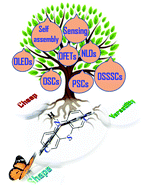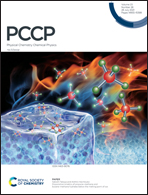Phenothiazine functional materials for organic optoelectronic applications
Abstract
Phenothiazine (PTZ) is one of the most extensively investigated S, N heterocyclic aromatic hydrocarbons due to its unique optical, electronic properties, flexibility of functionalization, low cost, and commercial availability. Hence, PTZ and its derivative materials have been attractive in various optoelectronic applications in the last few years. In this prospective, we have focused on the most significant characteristics of PTZ and highlighted how the structural modifications such as different electron donors or acceptors, length of the π-conjugated system or spacers, polar or non-polar chains, and other functional groups influence the optoelectronic properties. This prospective provides a recent account of the advances in phenothiazine derivative materials as an active layer(s) for optoelectronic (viz. dye sensitized solar cells (DSSCs), perovskite solar cells (PSCs), organic solar cells (OSCs), organic light-emitting diodes (OLEDs), organic field-effect transistor (OFETs), chemosensing, nonlinear optical materials (NLOs), and supramolecular self-assembly applications. Finally, future prospects are discussed based on the structure–property relationship in PTZ-derivative materials. This overview will pave the way for researchers to design and develop new PTZ-functionalized structures and use them for various organic optoelectronic applications.

- This article is part of the themed collections: 2021 PCCP HOT Articles and PCCP Perspectives


 Please wait while we load your content...
Please wait while we load your content...